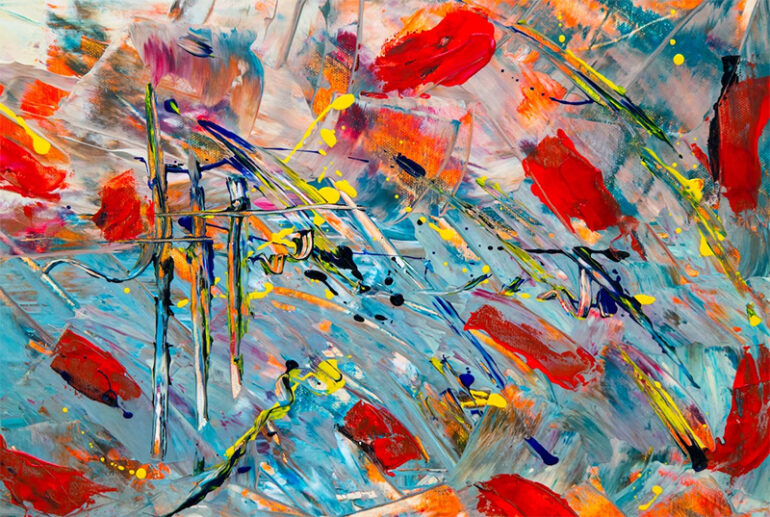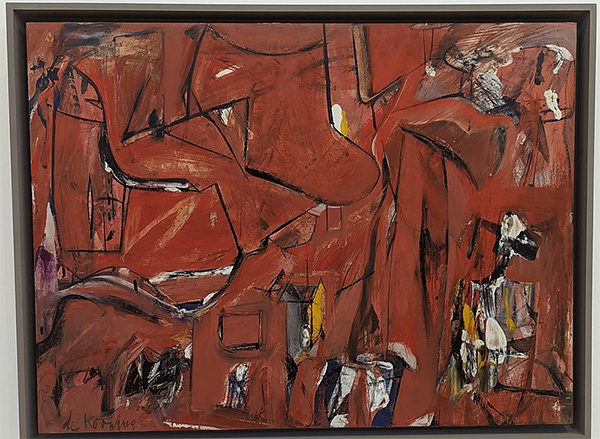Throughout history and into the future, art remains a powerful instrument for personal expression, allowing people to convey their concepts, feelings, and reflections through a diverse range of techniques and forms. This fact has remained consistent over time. During the mid-1900s, a notable artistic revolution emerged called abstract expressionism, propelling the exploration of creativity to unprecedented levels.
The origins of abstract expressionism
Abstract Expressionism came to prominence in the United States in the 1940s, following the end of World War II. In this era, creative individuals strived to break free from traditional artistic standards and explore innovative paths of communication. Taking cues from radical artistic movements in Europe such as Dadaism and Surrealism, American creatives embraced the notion of creating art that was non-representational and spontaneous.
The key artists of abstract expressionism
Abstract Expressionism is linked to key figures such as Jackson Pollock, Willem de Kooning, and Mark Rothko. The art world was revolutionized by Pollock’s renowned technique of “drip painting,” in which he poured and dripped paint onto canvases that were spread on the floor. Exhibiting the potency of pure gesture and movement, his pieces, such as “No. 5, 1948,” were displayed.
In contrast, De Kooning, however, infused his abstract works exploring the human figure with energy and emotion. Challenging notions of beauty and femininity, his iconic piece, “Woman I,” left viewers captivated by its bold brushstrokes.
Rothko, renowned for his expansive color field paintings, sought to elicit emotional reactions through his utilization of vivid and juxtaposed hues. Creating a contemplative and meditative experience for viewers, his work, like “No. 61 (Rust and Blue),” was notable.
The impact on the art world
The art world experienced a significant transformation due to the profound influence of Abstract Expressionism, both domestically and globally. The movement disrupted conventional ideas about art, urging artists to embrace their inner creativity and forsake the limitations of representation.
The establishment of New York City as a major art hub, rivaling the European art scene, was significantly influenced by Abstract Expressionism. Future developments in contemporary art were paved by the movement’s emphasis on individual expression and experimentation.
The legacy of abstract expressionism
In the art world today, one can still perceive the enduring impact of Abstract Expressionism. The works of contemporary artists, who persist in pushing artistic boundaries and exploring new forms of expression, reflect its influence.
In addition, Minimalism and Pop Art were subsequently influenced by Abstract Expressionism. Influenced by the rebellious spirit and desire for artistic freedom that characterized Abstract Expressionism, these movements, despite their stylistic differences, emerged.
Enthusiasts of artistic endeavors remain captivated by the charm of Abstract Expressionism, as it elicits profound emotions, exhibits bold brushwork, and embodies unrestricted individuality. As we delve into the artistic legacies of Pollock, de Kooning, and Rothko, we find ourselves engulfed in a realm where limitless imagination thrives and unbridled artistic expression is unleashed. The influence of this movement on the art scene was enormous, and its enduring heritage remains a source of motivation for contemporary artists. Embark on a thrilling journey through the realm of Abstract Expressionism and unleash the boundless power of your individual imagination.
Photo Attribution:
1st & featured image by https://unsplash.com/photos/XXcgyMlYx0Q
2nd image by FrankTang – Own work, CC BY-SA 4.0, https://commons.wikimedia.org/w/index.php?curid=126772703

